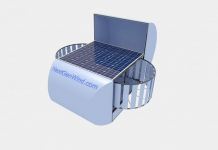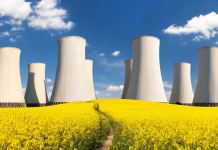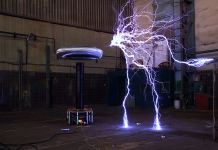Controlled thermonuclear fusion is a physical process, which is based on the synthesis of heavy nuclei of the atom of light. This process differs from the explosive thermonuclear fusion, as a traditional source of nuclear energy, control of the process. Also at the heart of a managed process – the synthesis of atomic nuclei, and at the base of the explosive thermonuclear fusion – fission of their own. In a short time to conduct this process you will use deuterium and tritium. Now we study the use of the process of synthesis of helium-3 and boron-11.
How is controlled thermonuclear reaction? Under the action of thermal motion of two or more nuclei come closer so close that the interaction between them is much stronger than and overcomes the force of the сoulomb repulsion. After overcoming this force born nuclei of other elements with large nuclear masses. Best bets for the synthesis of nuclei, those elements that will not have a high electrical charge.
Empirically, scientists have come to the conclusion that by far the most suitable elements for fusion is deuterium and tritium. This is based on the fact that for the synthesis of the energy expended is much less than is released during the process.
However, scientists do not stop to distinguish at least four types of fuel:
1. Reaction based on deuterium and tritium. This is the reaction that is easiest to hold, given modern technology, and as a result its a significant amount of energy. In the process of merging these elements is released to 17.6 MeV of energy and a kernel of helium-4. But there are also disadvantages of using this fuel. As a result of this reaction produces neutron radiation and also one of the components of the fuel (tritium) is quite expensive.
2. Reaction using deuterium and helium-3. This is a very complex reaction due to the fact that the isotope helium-3 is very expensive and industry is not possible. It is produced in nuclear power plants of tritium or method of mining on the moon. In the process of this reaction releases energy in the amount of 18.4 MeV.
3. Reaction-based monopropellant. As a monopropellant are two atoms of deuterium. But the process of merging the nuclei takes place more difficult than fusion of deuterium and helium-3. It is a slowly occurring reaction. The released energy varies from 3,268 MeV to 4,032 MeV, depending on the result of the reaction.
4. Other reactions. Under the concept of other reactions, refers to reactions with the use of fuel given the high cost and availability of components, the amount of energy released and the ease of flow of the process. On this basis, we can distinguish neutronless reaction and process in the light hydrogen.
Neutronless reactions do not produce as a result of the synthesis process radioactivity. They are the most promising, since the power of the energy flow that is released is not reduced.
Reactions using light hydrogen. They are only theoretically possible. To practice this process is not possible because you need to keep the reactor is infinitely large sizes.
As of 2013 industrial controlled thermonuclear fusion is not running, and international experimental reactor still under construction.
There are two types of reactors:
– in which the magnetic field in the regime of high temperature and low pressure retains and heats the plasma. Such systems are called quasi-stationary;
– the process of synthesis occurs during heating of the target for a short period of time heavy-duty lasers. These systems are called impulsive.
Tense debate about the financial feasibility of electricity production using controlled nuclear fusion. According to specialists, the cost of electricity using thermonuclear fusion is comparable to the most expensive electricity production from traditional sources. Further development of this direction depends entirely on how effectively it will be used, the availability of fusion fuel, and the cost of disposal of the reactor.























